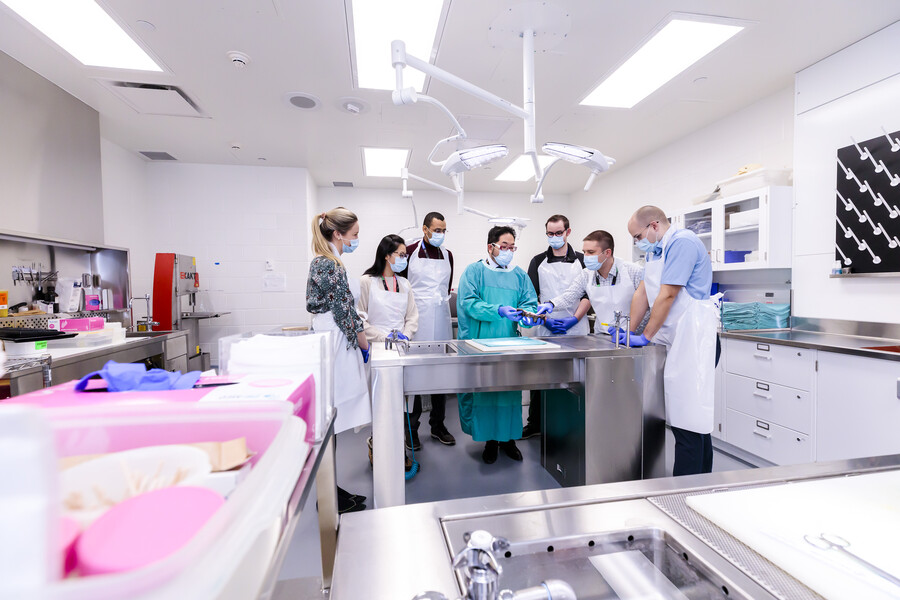Case of the Month: February 2024
Clinical history
A 63 year old man presented to his family doctor with a 6-week history of cough and 15 lb unexplained weight loss. The patient is an ex-smoker who quit 15 years ago (10PK years) and a car factory painter. There is no personal or family history of malignancy. His past medical history includes obesity, diabetes, and hypertension. COVID, viral, and bacterial cultures were negative. An X-ray ordered by his family physician showed a left lower lobe mass. The patient was subsequently referred for diagnosis and treatment and underwent a left lower lobe lung lobectomy as primary treatment of the lung mass.
Questions:
- What is your differential diagnosis (list three)?
- Name three (3) immunohistochemical stains used to work-up this case.
- Name three (3) biomarkers that can be tested in this case.
How to participate
Take a look at the images.
Anyone is welcome to try to solve the puzzle by commenting on the related post on our Instagram.
If you are a medical student at the University of Toronto, you can also:
If you do, you are in for a chance to win a $100 gift card! (UofT Med students only).



Discover the answer to February's Case of the Month challenge!
The answer to February’s Case of the Month is poorly differentiated adenocarcinoma.
Most cancers are graded based on how similar they look to the tissue the cancer originated from. Adenocarcinomas are epithelial cell cancers that are derived from glandular-type cells (adeno=gland, carcinoma=cancer). Adenocarcinomas of the lung derive from the epithelial cells lining the alveolar spaces. They can have a variety of different patterns depending on how differentiated the cancer is: lepidic (well-differentiated), acinar and papillary (moderately differentiated), micropapillary and solid (poorly differentiated). When cancers are poorly differentiated (e.g. form solid nests without any hint of differentiation), then immunohistochemistry is necessary to determine the cell of origin because poorly differentiated cancers can all look similar on routine H&E stains. Specific stains for lung adenocarcinoma are TTF-1 and napsin-A. Squamous cell carcinomas stain for p40/p63. Neuroendocrine carcinomas stain for CD56, synaptophysin, and/or chromogranin.
Once the type of cancer is determined by immunohistochemistry, additional ancillary testing can be performed to look for specific mutations common to that cancer type. This is called prognostic and predictive biomarker testing and helps oncologists provide personalized treatment plans to patients. Many mutations can be detected via a technique called next-generation sequencing. Important genes to evaluate in lung adenocarcinomas are EGFR, ROS1, and ALK. Other genes tested include BRAF, MET, RET, FGFR1, HER2, KRAS, PIK3CA, NTRKs, and TP53. Many of these gene mutations are commonly seen in other cancers as well.
PD-L1 is another important biomarker, which is tested using immunohistochemistry. PD-L1 is short for programmed death-ligand 1, which binds PD-1 receptors on T-cells and tells the T-cells not to kill the cell expressing PD-L1. Cancer cells can evolve to upregulate PD-L1 to trick the immune system into not killing them, but therapies now exist (immunotherapy) to unmask the tumour cells and let the immune system do its job to destroy the cancer.
If you are a current medical student at U of T, you can register to join the February case of the month lecture online or in person and have a chance to win a $100 gift card!
You can also join the Special Interest Group in Laboratory Medicine to learn more about Laboratory Medicine.
Laboratory Medicine and the study of disease for medical students

